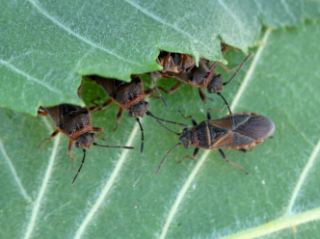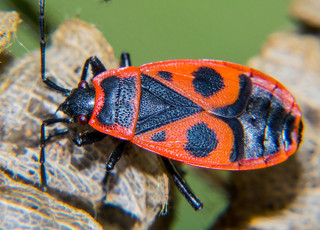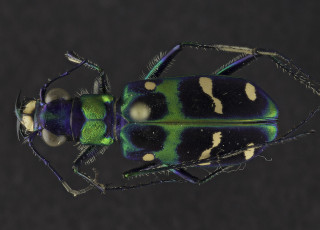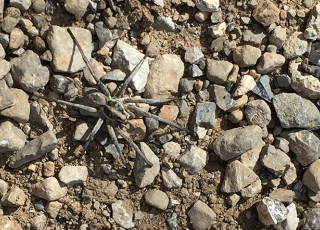Elm Seed Bugs in Utah – Pests or Passersby?
By Michael Mozdy
“Pest” is a convenient way to indicate something annoying and unwanted. But apart from what you might call a younger sibling, what do we mean when we call an insect a pest?
Entomologists, who tend to admire bugs, beetles, spiders and such, don’t categorize everything annoying and unwanted as “pests.” Rather, a standard definition of pests is much like this one from the Penn State Extension: “A pest is an organism living and growing where they are not wanted and can cause damage to plants, humans, structures, and other creatures, including crops that are grown for food.” An important part of this definition is the notion of harm or damage that pests might cause.
But that other aspect – when we simply don’t want them around – also dominates many people’s definition of pest.
“Every organism tries to stay alive and make more of themselves,” states NHMU Invertebrate Collections Manager, Christy Bills. “We can develop a more understanding and appreciative approach to insects, in particular, if we allow for this basic biological fact.”
Let’s take Utah’s current fascination with elm seed bugs. They’ve been in the news, described by pest control company representatives as an unwelcome infestation, hundreds of them found inside windowsills or doorways. We often experience this with box elder bugs, too, in the autumn.
“I’d say they’re a great bioindicator that you have an insulation problem,” counters Bills. It’s a simple but insightful point. More importantly, it marks a significant shift in perspective: instead of eyeing a pile of tiny, harmless bugs with disgust, Bills shows us that we can put aside our innate prejudices against insects to consider the situation more logically.
This is the first shift in reconsidering if something is truly a pest or just a nuisance. We can admit that they have every right to be alive as we do and ask ourselves what they might be telling us about the place we find them. We can be curious instead of freaked out.
When we observe them, we can find out a lot of things. First of all, they’re tiny, with adults being only 1/3 inch long. Second, we could discover that they are bugs, not beetles.
“Bug wings cross over and they have a sucking mouthpart,” explains Bills. “That means they don’t bite.” Beetles’ wings, on the other hand, lay straight next to each other and they have mouthparts that can bite and chew. The elm seed bug uses its sucking mouthpart exclusively on elm tree seeds and leaves. It’s what entomologists call a specialist, meaning it gets its nutrition from a specific species of plant.
So, not much to fear from a tiny bug that can’t bite. Admittedly, though, there two things that give elm seed bugs a bit of a “yuck” factor. One is that they stink when they are squished. The other is that they can leave fecal droppings around window frames and other places where they gather.
Getting around the first problem is easy. “Why squish them?” asks Bills. “Just sweep them out and put them in the yard.”
The second problem is as easy to overcome as the first. After all, we regularly pick up much larger and messier poo from our house pets. A sponge and some soapy water can clean up a windowsill in no time.

Elm seed bugs hiding under overlapping elm leaves. Photo by Ryan Davis, © Utah State Extension.
Showing this kind of respect for a fellow inhabitant of our planet (yes, even just an insect) can be rewarding. With a little online research and basic understanding of Utah’s invertebrates, you can save money by not calling an exterminator, you avoid dangerous pesticides, you feel good about stewarding another creature rather than killing it, and you can even help to spread a new ethic to your loved ones.
“What a great opportunity for summer fun with your kids!” exclaims Bills. “You can make a science project – put them in a jar and see what they can eat. You can use a magnifying glass to see the anatomy, and see if your kids can draw one with all those details.”
Being curious about and respectful to the natural world is at the heart of what we do at NHMU and we encourage it in everyone. So, enjoy your summer and try to see those pests as something else: maybe just passersby in this wonderful world of ours.
For more information on the elm seed bug, one of Utah’s newest non-native “pests” (first documented in 2014), see this informative article by the Utah State Extension. You can also join us at the Museum for our annual BUGfest, where entomology experts can answer all your bug-themed questions!




